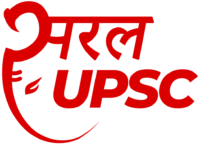Consider the following statements about the Cripps Mission:
1. Cripps was a member of the War Cabinet.
2. The reason for sending the Cripps Mission was the imminent attack of the Japanese and pressure on Britain from Allies to seek Indian co-operation.
3. It recommended that any province, not willing to join the Union could have a separate constitution and form a separate Union.
Which of the statements given above is/are correct?
Consider the following statements about the Cripps Mission:
1. Cripps was a member of the War Cabinet.
2. The reason for sending the Cripps Mission was the imminent attack of the Japanese and pressure on Britain from Allies to seek Indian co-operation.
3. It recommended that any province, not willing to join the Union could have a separate constitution and form a separate Union.
Which of the statements given above is/are correct?
Options
Similar Questions
Which of the following persons participated in the First Round Table Conference? 1. Muhammad Ali…
In the context of Indian history, the principle of ‘Dyarchy (diarchy)’ refers to
Economically, one of the results of the British rule in India in the 19th century…
He wrote biographies of Mazzini, Garibaldi, Shivaji and Shrikrishna; stayed in America for some time;…
In the Federation established by The Government of India Act of 1935, residuary powers were…
